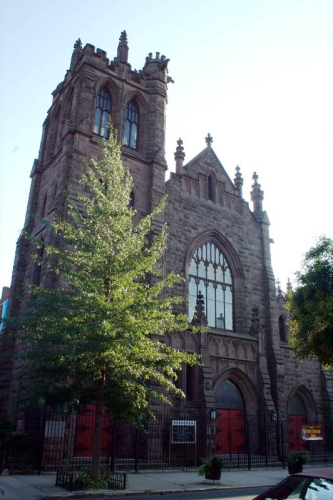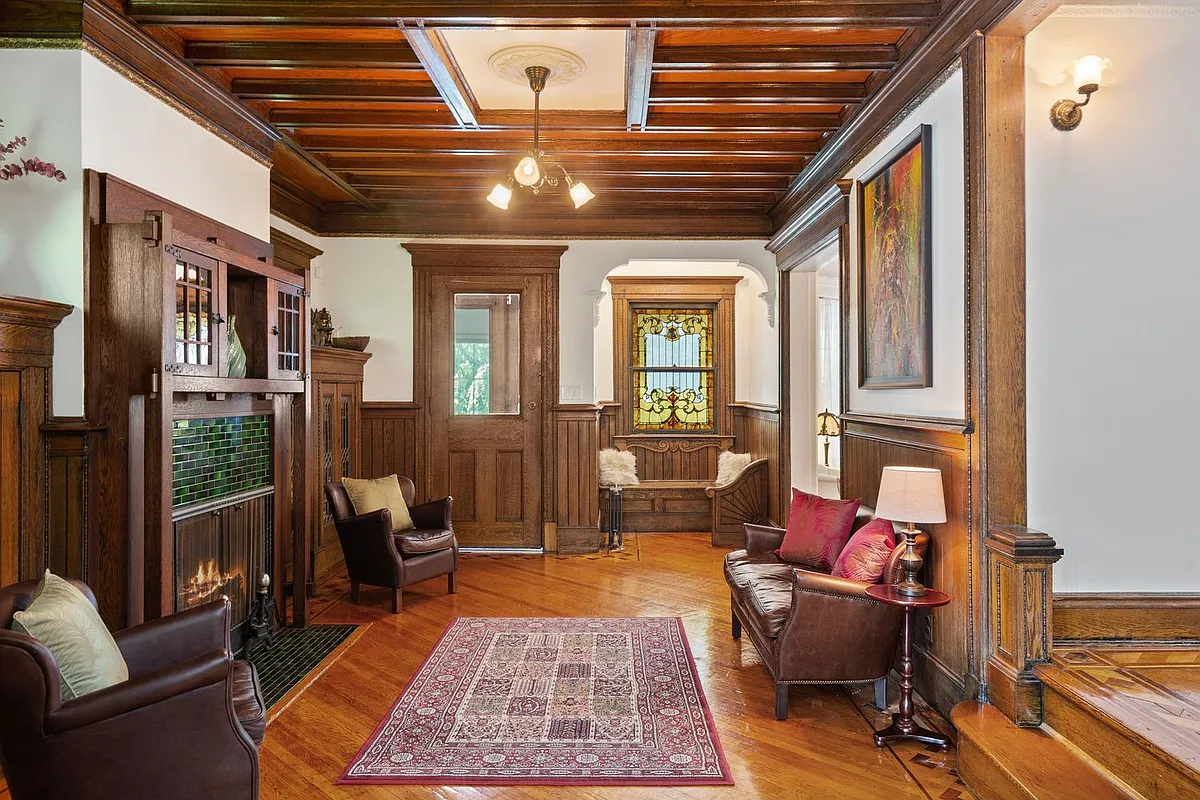Building of the Day: 334 MacDonough Street
This church is a prime example of how the events that take place in a building can be as important as the building itself.

Brooklyn, one building at a time.
Name: Episcopal Church of the Good Shepherd, now St. Philips Episcopal Church
Address: 334 MacDonough Street
Cross Streets: Lewis and Stuyvesant Avenues
Neighborhood: Stuyvesant Heights
Year Built: 1898-99
Architectural Style: English Gothic
Architect: Arnie Delhi
Other Work by Architect: St. Jerome Roman Catholic Church, Bronx, and other churches and buildings in the metropolitan area
Landmarked: Yes, part of Stuyvesant Heights HD (1971)
The story: This church is a prime example of how the events that take place in a building can be as important as the building itself. Since 1944, this church has been an important part of African-American life and culture here in Bedford Stuyvesant.
The church was built as the Church of the Good Shepherd, an Episcopal church established in the upscale community of Stuyvesant Heights. It was designed by Arnie Delhi, a Norwegian architect who joined many other Scandinavian architects of great talent, here in Brooklyn during this time period. Delhi, who was the senior partner of Delhi and Howard, was an expert in church design. For this new money WASP neighborhood, he took his inspiration from the English Gothic style, creating a rough-hewn and rustic looking church, complete with crenellations, crocketed finials, and some very impressive Medieval gargoyles.
St. Philips Episcopal Church was founded in 1899, about the same time Church of the Good Shepherd, only a mile or so from here, yet worlds away. It was a black congregation whose first home was an empty storefront on Pacific Street, near the African American community of Weeksville. They soon established a church site at 1610 Dean Street, the first church in the area to be planned and erected by black engineers and builders.
St. Philips has always been a church of firsts. They were the first black Episcopal congregation to get a charter for a chapter of the Brotherhood of St. Andrew. In 1907 they sponsored the first African American company of the United Boys Brigade, the precursor of the Boy Scouts. In 1921, they were among the first anywhere to obtain a charter for a Boy Scout troop. St. Philips gained parish status in 1926.
In 1944, St. Philips’ congregation bought the Church of the Good Shepherd building. Their pastor at the time was Dr. J. M. Coleman, who was also the first African American to serve on the Board of Education in New York City. The greater neighborhood was now being called Bedford Stuyvesant, and the African American population here was growing, as the recent completion of the A line in the subway system brought black people to the neighborhood from overcrowded Harlem. Immigration from the Caribbean was also rising, and St. Phillips soon attracted a large mixed congregation from the Islands, as well as from Virginia and North Carolina. In 1945, the Stuyvesant Community Center of Brooklyn opened in St. Philip’s parish hall, another first; the first African American community center run by and for a black community.
In 1997, the church contracted for a magnificent new organ that draws upon the traditions of Western music, with the materials of Africa and the Americas. Here’s the description from the opening concert:
“In July of 1997, an agreement was made between St. Philip’s Church and the Canadian firm of Guilbault-Thérien Inc., St. Hyacinthe, Quebec, for the installation of a new three-manual and pedal pipe organ. This forty-one rank organ, Opus 43, draws upon eclectic principles of contemporary North American trends in pipe organ building. The movable detached terraced-jamb console includes sharps made of ebony, naturals made of cow bone, and drawknobs constructed of fine cocobolo wood from North Africa.
The key transmission is of the solid state type and includes a combination system of 64 memory levels and a sequencer. Both the casework and the console woodwork were constructed of solid American oak, and the display pipework of the Great and Pedal principals was made of 75 percent polished tin. Selected pipework from the rebuilt 1931 Austin organ, Opus 1801, and even previous organs (origins unknown) that was incorporated into that instrument, has been carefully repaired and revoiced to compliment the new specification.
More than 7,500 hours of labor, including the final installation, were required to complete this instrument. The dedicatory recital of the Rev. Dr. John Milton Coleman Memorial Organ was performed on April 18, 1999, by Hugh Manley Knight, A.A.G.O., Organist and Choir Master of St. Philip’s Church.” (nycago.com)







What's Your Take? Leave a Comment